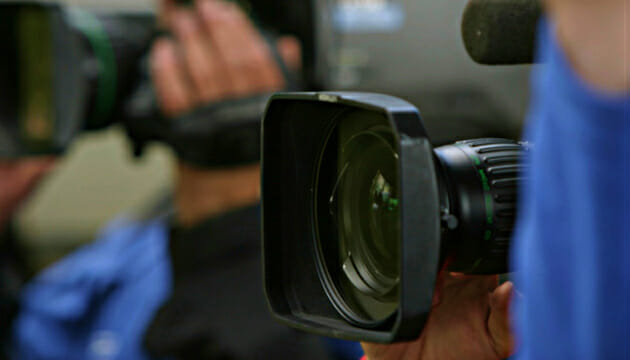We aren’t out of the woods yet. If you’ve been following along, I’ve already explained the basics of nonprofit video making.
But if you’re a dedicated video bootstrapper, there are a few more essentials you’ll need to get your head around.
Last time, we started to demystify video resolution and frame rates with side-by-side comparisons on they affect how the look of your final product. Now, let’s take a closer look at what’s really happening with your camera’s hardware.
Nonprofit Video Making Essentials: Sensors, Pixels and Lenses
Transcript:
In the last video we talked about video resolution and frame rates. Now we’re going to talk about the actual camera hardware.
Cameras work because light comes through the lens and then is absorbed into the sensor. That sensor is the biggest factor of what affects your video quality.
There are two types of sensors: CCD and CMOS. Both have their pros and cons but overall, CCD will provide you with better quality. CCD sensors are often way more expensive and usually only found in professional cameras, but I have seen consumer cameras with CCD sensors.
So right now you probably figure you’ll get a CMOS camera and just get one with a ton of megapixels—but that could be a mistake, because the size of the sensor makes a big difference. The bigger the sensor, the larger the pixels or photosites on that sensor; the more light they absorb. Think of wind passing through a tight screen compared to a large screen. Don’t be surprised when a camera with an 1in sensor and 20 megapixels doesn’t look as good as a camera with a 1.5 in sensor and 14 megapixels.
The lens also can impact the quality of the video, but with most consumer cameras like the PlayTtouch or the Vixia, you don’t really have a choice. If you are thinking about buying a camera with interchangeable lenses, the general rule of thumb is you get what you pay for.
But here’s a quick intro on lenses: The number or numbers used to describe lenses stands for how close the lens is to the sensor. So a 50mm lens is 50mm away from the sensor. Because there is only one number, it means that it doesn’t move, so we would call it a fixed lens. Whereas a zoom lense like a 24-105 means that the lens can change from 24mm to 104mm away from the sensor. The closer the lense to the sensor, the wider the picture will be. The f-stop is for the aperture, which controls how much lights passes through the lens—the lower the f-stop the wider the aperture, so more light gets to the sensor. This is good if you’re shooting indoors or low light situations.
A tip on lenses:most beginners get excited about zoom lenses thinking they give them more flexibility, but I suggest saving money and getting a higher quality fixed lens, and just move closer or farther away from the subject you’re shooting. It just looks better.
Alright, for this video the big takeways are:
- CCD over CMOS
- The larger the sensor the better
- If you’re looking at lenses, get one with a low f-stop and that’s fixed, I highly suggest the 50mm.
Next video, we’re going to get technical and talk about how the way your camera encodes video can affect your video quality. See you then!






